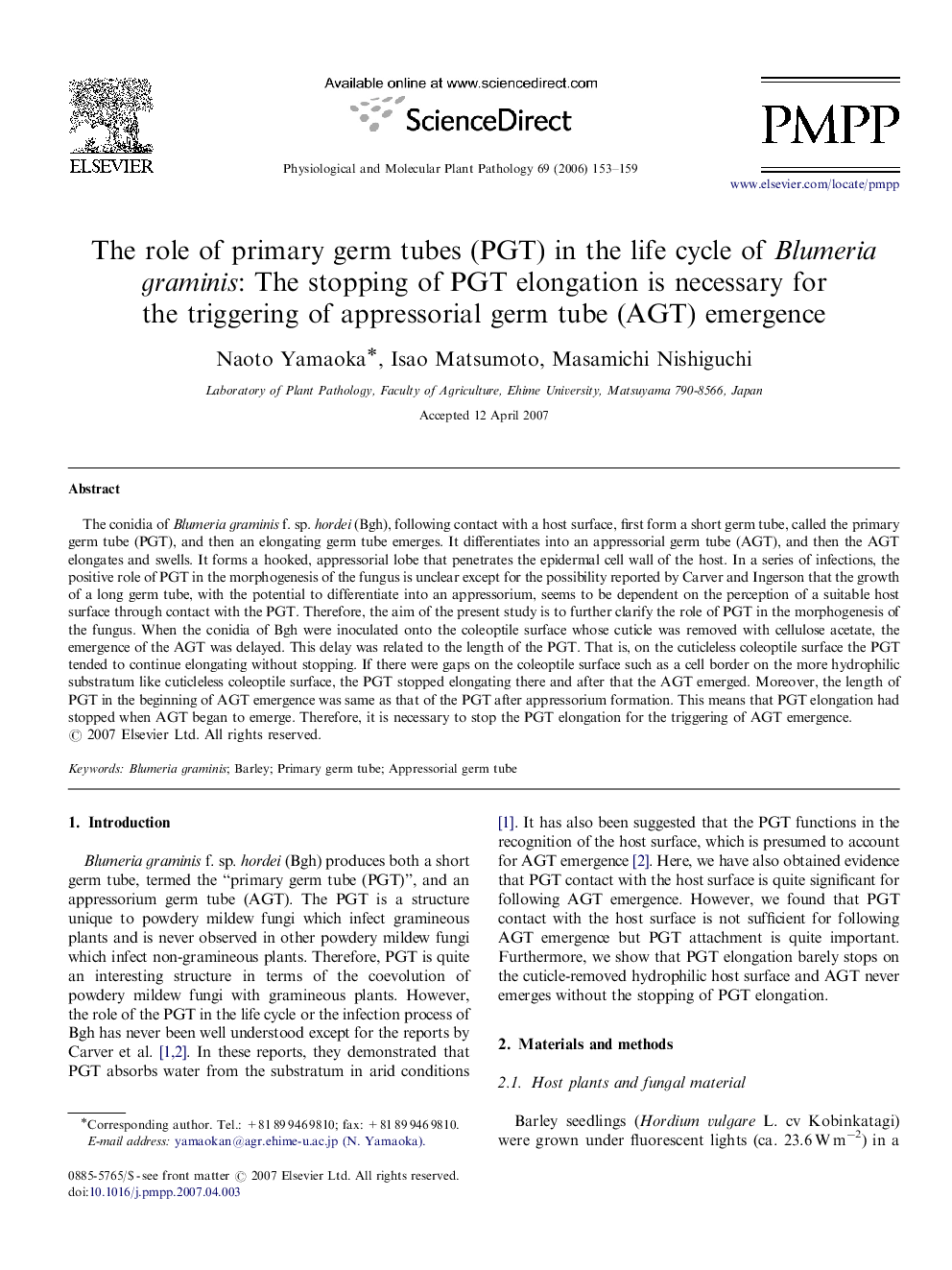| Article ID | Journal | Published Year | Pages | File Type |
|---|---|---|---|---|
| 2836759 | Physiological and Molecular Plant Pathology | 2006 | 7 Pages |
The conidia of Blumeria graminis f. sp. hordei (Bgh), following contact with a host surface, first form a short germ tube, called the primary germ tube (PGT), and then an elongating germ tube emerges. It differentiates into an appressorial germ tube (AGT), and then the AGT elongates and swells. It forms a hooked, appressorial lobe that penetrates the epidermal cell wall of the host. In a series of infections, the positive role of PGT in the morphogenesis of the fungus is unclear except for the possibility reported by Carver and Ingerson that the growth of a long germ tube, with the potential to differentiate into an appressorium, seems to be dependent on the perception of a suitable host surface through contact with the PGT. Therefore, the aim of the present study is to further clarify the role of PGT in the morphogenesis of the fungus. When the conidia of Bgh were inoculated onto the coleoptile surface whose cuticle was removed with cellulose acetate, the emergence of the AGT was delayed. This delay was related to the length of the PGT. That is, on the cuticleless coleoptile surface the PGT tended to continue elongating without stopping. If there were gaps on the coleoptile surface such as a cell border on the more hydrophilic substratum like cuticleless coleoptile surface, the PGT stopped elongating there and after that the AGT emerged. Moreover, the length of PGT in the beginning of AGT emergence was same as that of the PGT after appressorium formation. This means that PGT elongation had stopped when AGT began to emerge. Therefore, it is necessary to stop the PGT elongation for the triggering of AGT emergence.
